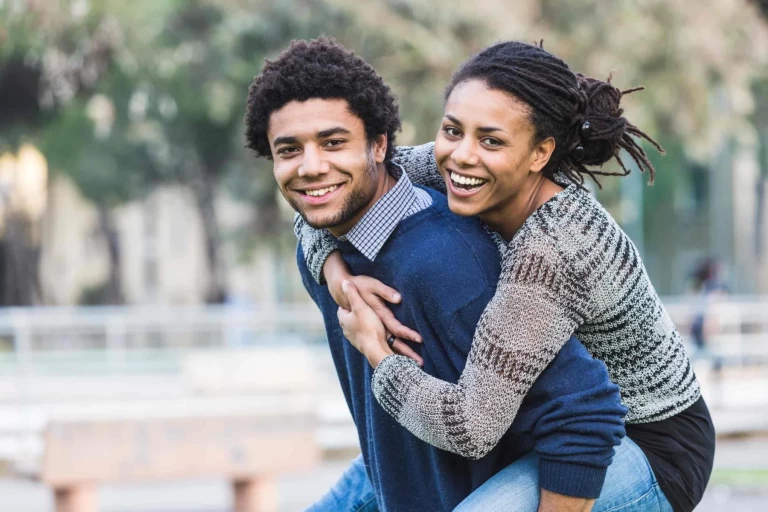
How Should I Sleep with Arthritis in My Neck?
Arthritis in the neck, Cervical Spondylosis, could be caused by various things. Often times, arthritis in the neck is related to aging as the disks and joints in our body begin to degenerate as we get older. Not everyone who has arthritis in the neck will be able to tell as sometimes you will not notice any symptoms.
However, finding out if you do have arthritis in the neck is important even if you do not feel any discomfort at the moment. Finding out you have arthritis in the neck before it becomes a more noticeable problem will allow you to have a higher chance at repairing the problematic area.
Those who experience discomfort and other painful symptoms still have the ability to improve their condition as well. If you do have certain symptoms and would like to know if they relate to arthritis in the neck, we have made a summary of the most common symptoms.
What Does Arthritis in the Neck Feel Like?
It is very common for those who do have arthritis in the neck to not have any symptoms at all. Symptoms that are related to arthritis in the neck, however, are stiffness in the neck area and pain that worsens by looking up or down for long periods of time.
Activities such as reading or driving where the neck is held in the same position for a while can cause pain for the person as well. To help reduce the pain, those with arthritis in the neck tend to rest or lie down comfortably to take stress off of the neck area.
Those who experience symptoms with their arthritis in the neck may have headaches, numbness or weakness (in the arms, hands, and fingers), trouble walking or loss of balance, weakness in the hands or legs, and muscle spams in the neck and/or shoulders.
If you are feeling a numbness or weakness in your arms, hands, and fingers, this could be due to the space for your spinal cord or nerve roots becoming smaller. Another symptom of arthritis in the neck is a grinding or popping noise, or sensation, as you turn your neck.
How Should I Sleep with Neck Arthritis?
Certain positions can cause discomfort if you have arthritis in the neck and make it hard to get good sleep. The neck is a very delicate part of our body and can be very sensitive. The most important thing to do is to sleep in spinal alignment.
This means to keep the head in line with your spine and refrain from sleeping in awkward positions or “slanted”. If you imagine your head as being an extension from your spine, this could make it easier for you to know how to position it correctly.
In addition, be level with the spine by not having the head moved far forward or far back – keeping it level is important so do not use very thick pillows that push your head too far up or pillows that are too thin, resulting in the head being lower than the spine.
Sleeping while tilting your head is not recommended, as this can easily take the head out of alignment with the spine. Tilting to one side or the other can lead to a pinched nerve, causing you to experience symptoms of pain down one or both arms, weakness, tingling or numbness.
If you are worried about your head tilting, there are cervical pillows to help the head and spine stay in a comfortable alignment.
Do not sleep on your stomach. This position often twists the position of the neck and can the neck area a lot of discomfort and harm.
Imagine holding your neck in a twisted position for hours. Not only does it sound painful, but it can cause many problems for your neck down the line even for those who feel no symptoms from it yet.
If you have trouble finding a pillow to help with arthritis in the neck, try turning to down feathered pillows that can be easily formed to fit your shape and support the weight of the head. If you move throughout the night and are afraid of moving out of alignment, cervical pillows can help.
How do you Treat Arthritis in the Neck?
While there are medications available to help with the discomfort that comes with arthritis in the neck, they do not help what is causing it. There is also physical therapy and exercises to help improve your posture in order to reduce harm to the neck.
However, there is a way to target what could be causing the discomfort from the arthritis in the neck.
When your upper cervical spine, the neck area underneath the base of the skull, is out of alignment, this can cause discomfort and other complications over time if left unattended. The top two bones of your spine protect your brain stem and allows your body and brain to send signals back to one another.
When one or both top bones are out of alignment, they can squeeze the brain stem and distort your body’s communication. The nerves and soft ligaments surrounding this area are also affected along with your blood flow as this passage is pinched, leading up to pain and it could cause arthritis in the neck as the affected areas begin to weaken.
An upper cervical chiropractor focuses on the upper cervical spine and, unlike general chiropractic, uses very small, specific movements that are gentle on the neck to correct the area. Patients often state receiving relief immediately, while others feel it gradually improving over time depending on how the misalignment occurred or how long they have been living with it.
The main goal for an upper cervical chiropractor is to correct the misalignment less and less until the neck becomes strong enough to hold the correction on its own. Even after the very first correction, since the spine is realigned the body responds immediately and gets back to communicating properly – ready to begin the repairing process.
Since this area may be weak at first, the alignment could fall out of place about 24-48 hours later, but after receiving corrections from an upper cervical chiropractor at a proper rate, the area continues to repair and strengthen over time and your body will return its strength to hold the alignment.
The period of time it takes for a patient to hold their alignment all depends on their body’s current state and an upper cervical chiropractor can give an estimation after a consultation with the patient.
What are the Risks of Chiropractic Treatment?
Complications related to upper cervical adjustments are actually quite rare but can range from discomfort or dizziness; however, receiving adjustments from a professional are very safe.
Chiropractic in general is recognized as one of the safest, drug-free treatments with excellent safety record. It has also outperformed deep-tissue massage, yoga, over-the-counter medication, and prescription medication!
Many patients who have had upper cervical adjustments no longer needed their previous medications after their body healed properly.
Unlike medications or surgery, upper cervical adjustments do not come with harmful side effects and are highly beneficial to aiding the body in its natural processes rather than altering it unnaturally.
It is important to always be adjusted by someone who is experienced in upper cervical chiropractor, as they can ensure you get the exact precise adjustments you need and always, always be specific about your systems when speaking to an upper cervical chiropractor.
We would like to invite you to accept our invitation for a free 15 minute phone consultation to speak with one of our upper cervical chiropractic doctors where you can ask any questions you may have and decide if an exam or care might be right for you.
You can click the Contact Us link on this page, or alternatively give us a ring at the office at
(843) 225-5855.







Leave a comment